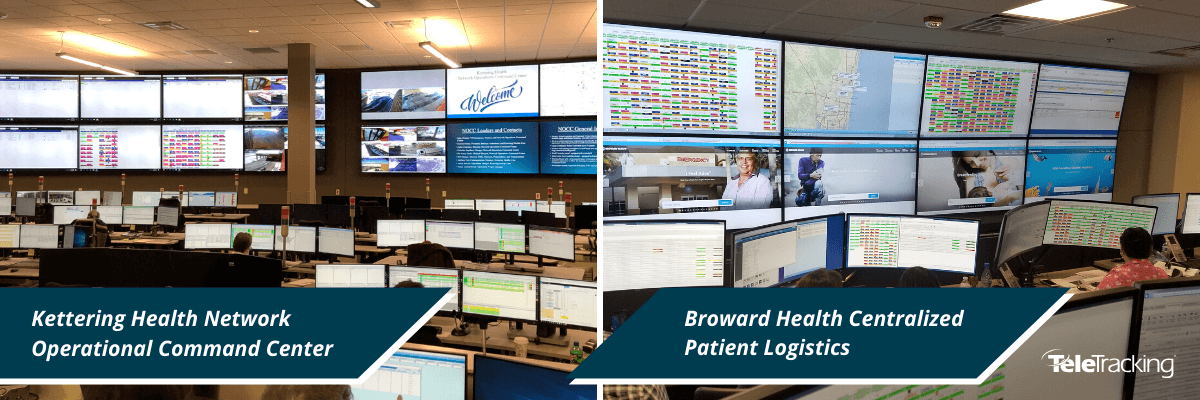Disaster Readiness Part 2: Kettering Health Network & Broward Health
listen time | 13:51
Part II: Kettering Health Network and Broward Health
Disasters—from wildfires and hurricanes to tornados and mass shootings—are unfortunately a part of life. And, as we’re seeing with the current COVID-19 outbreak, the ability to have visibility and transparency during an emergency is critical. During these difficult times, the benefits of a centralized approach to care emerge―and demonstrate how important planning and regular disaster readiness drills are. This type of preparation is tremendously impactful—especially when mere seconds can mean the difference between life and death.
In part two of our podcast on disaster readiness, we’re joined by John Weimer, Vice President of Network Emergency, Trauma and the Operations Command Center for Kettering Health Network in Dayton, OH and Justin Willis, Manager of Centralized Patient Logistics for Broward Health, in Ft. Lauderdale, FL.
In May 2019, Kettering’s hospitals were faced with challenges when the Dayton area was hit by 19 tornadoes, and then less than three months later when nine people were killed in a mass casualty event in the city’s Oregon District. In February 2018, Broward Health received patients from Marjory Stoneman Douglas High School, where 17 people were killed and 17 injured when a student opened fire. Then last fall, Broward was charged with preparing for Hurricane Dorian, which thankfully ended up missing the Ft. Lauderdale area.
Both John and Justin admitted that they wished they didn’t have to be sharing these stories―but that it is so important for everyone to work together and learn from each other in order to provide excellent patient care during the toughest of times.

Kettering Health Network Operational Command Center | Broward Health Centralized Patient Logistics
What you’ll learn in today’s episode:
- When a health system has multiple hospitals, it’s important to have standardized disaster processes and equipment so that site variations don’t impact patient care
- A health system command center enhances collaboration, communication and makes it possible to move patients effectively and maximize limited resources
- Regular drills are critical to preparedness—both leadership teams and frontline staffs should be involved in both tabletop exercises and full simulations
More about this episode
About the Experts
John Weimer is Vice President of Network Emergency, Trauma and the Operations Command Center for Kettering Health Network, a faith-based, nonprofit health system that includes nine hospitals, 12 emergency departments and 120 outpatient facilities serving southwest Ohio. John’s other responsibilities include oversight of Pre-Hospital Emergency Services, Ground/Air Transportation and Disaster/Emergency Management. Prior to joining Kettering Health Network, John worked in healthcare organizations throughout Ohio and Los Angeles, California in various leadership and clinical positions.
Justin Willis is the Manager of Centralized Patient Logistics for Broward Health. In this role, he manages more than 25 employees who direct patient flow and facilitate patient transfers into the Broward Health system. Justin also worked for Broward Health as a Bed Control Supervisor, responsible for controlling patient placement and facilitating patient flow throughout the hospital. Prior to joining Broward, he worked Brooks Rehabilitation and Health South Rehab Hospital.
We're glad you're enjoying our resources! Please tell us more about you to access our full library.
This will allow us to personalize your experience on TeleTracking.com. Of course, we will never sell your information and you can opt-out at any time. Need help now? Contact a Patient Flow expert.
Leaving the website
You're about to leave this website, to one of our affiliates or another information source.
